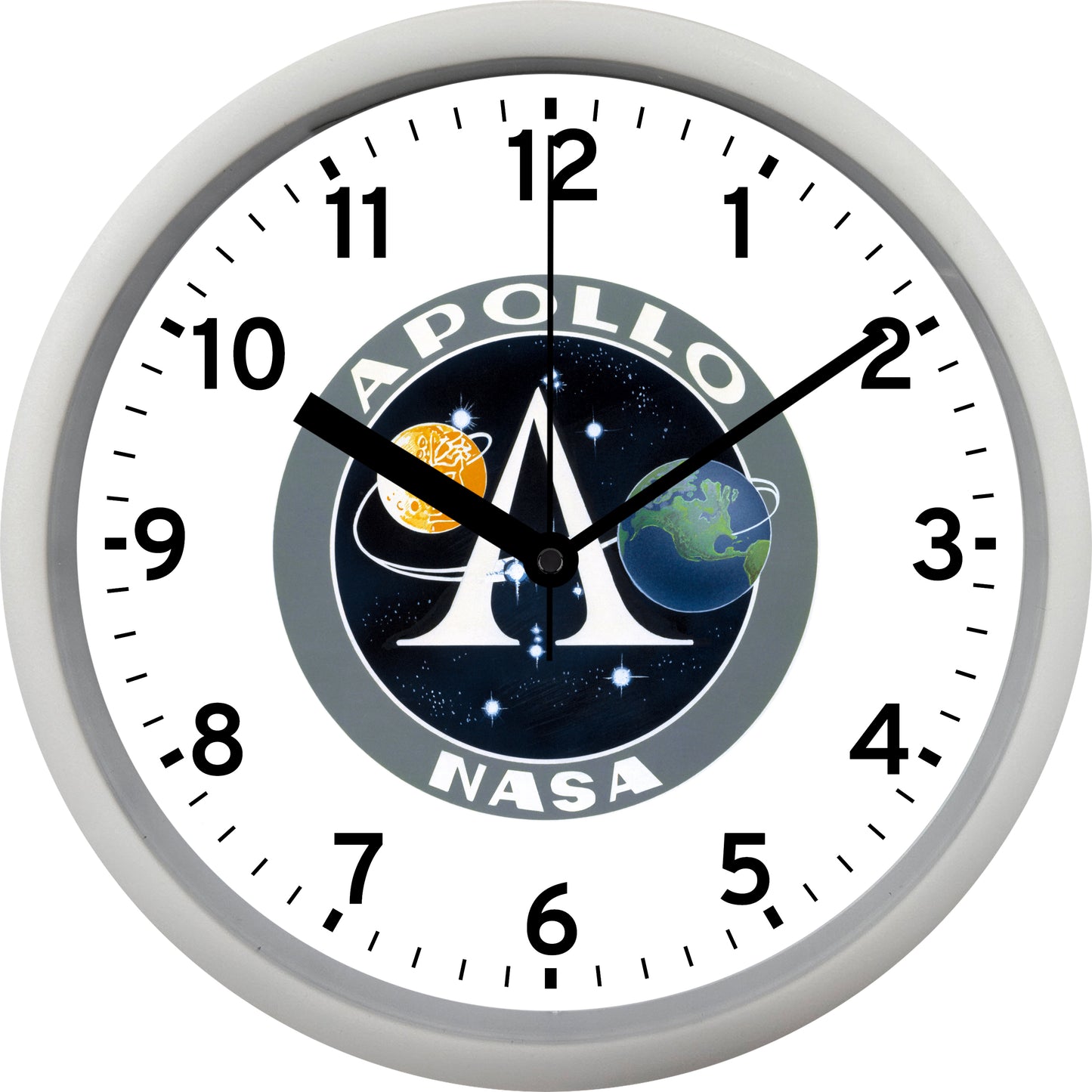Mainstays
NASA Project Apollo Wall Clock
NASA Project Apollo Wall Clock
Item Number/SKU:
SKU:NASA-24-WH
Couldn't load pickup availability
NASA "National Aeronautics Space & Administration" Project Apollo Wall Clock
Apollo 1 - Flight Crew 1 - Gus Grissom, Edward H. White, & Roger B. Chaffee
Apollo 7 - Flight Crew 2 - Wally Schirra, Walt Cunningham, & Donn Eisele
Apollo 8 - Flight Crew 3 - Frank Borman, James Lovell, & William Anders
Apollo 9 - Flight Crew 4 - James McDivitt, David Scott, & Russell Schweickart
Apollo 10 - Flight Crew 5 - Thomas Stafford, John Young, & Eugene Cernan
Apollo 11 - Flight Crew 6 - Neil Armstrong, Michael Collins, & Buzz Aldrin
Apollo 12 - Flight Crew 7 - Pete Conrad, Richard Gordon, & Alan Bean
Apollo 13 - Flight Crew 8 - James Lovell, Jack Sqigert, & Fred Haise
Apollo 14 - Flight Crew 9 - Alan Shepard, Stuart Roosa, Edgar Mitchell
Apollo 15 - Flight Crew 10 - David Scott, Alfred Worden, James Irwin
Apollo 16 - Flight Crew 11 - John Young, Kenneth Mattingly, & Charles Duke
Apollo 17 - Flight Crew 12 - Eugene Cernan, Ronald Evans, & Harrison Schmitt
Project Apollo - 1961-1972:
The U.S public's perception of the Soviet lead in the space race (by putting the first man in space) motivated President John F. Kennedy to ask the Congress on May 25, 1961, to commit the federal government to a program to land a man on the Moon by the end of the 1960s, which effectively launched the Apollo program.
Apollo was one of the most expensive American scientific programs ever. It cost more than $20 billion in 1960s dollars or an estimated $208 billion in present-day US dollars. (In comparison, the Manhattan Project cost roughly $26.6 billion, accounting for inflation.) It used the Saturn rockets as launch vehicles, which were far bigger than the rockets built for previous projects. The spacecraft was also bigger; it had two main parts, the combined command and service module (CSM) and the lunar landing module (LM). The LM was to be left on the Moon and only the command module (CM) containing the three astronauts would eventually return to Earth.
The second manned mission, Apollo 8, brought astronauts for the first time in a flight around the Moon in December 1968. Shortly before, the Soviets had sent an unmanned spacecraft around the Moon. On the next two missions docking maneuvers that were needed for the Moon landing were practiced and then finally the Moon landing was made on the Apollo 11 mission in July 1969.
The first person to stand on the Moon was Neil Armstrong, who was followed by Buzz Aldrin, while Michael Collins orbited above. Five subsequent Apollo missions also landed astronauts on the Moon, the last in December 1972. Throughout these six Apollo spaceflights, twelve men walked on the Moon. These missions returned a wealth of scientific data and 381.7 kilograms (842 lb) of lunar samples. Topics covered by experiments performed included soil mechanics, meteoroids, seismology, heat flow, lunar ranging, magnetic fields, and solar wind. The Moon landing marked the end of the space race; and as a gesture, Armstrong mentioned mankind when he stepped down on the Moon.
Apollo set major milestones in human spaceflight. It stands alone in sending manned missions beyond low Earth orbit, and landing humans on another celestial body. Apollo 8 was the first manned spacecraft to orbit another celestial body, while Apollo 17 marked the last moonwalk and the last manned mission beyond low Earth orbit to date. The program spurred advances in many areas of technology peripheral to rocketry and manned spaceflight, including avionics, telecommunications, and computers. Apollo sparked interest in many fields of engineering and left many physical facilities and machines developed for the program as landmarks. Many objects and artifacts from the program are on display at various locations throughout the world, notably at the Smithsonian's Air and Space Museums.


